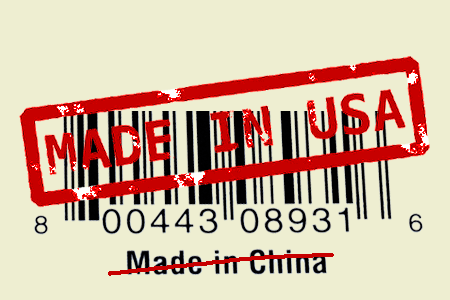
China loses ground, sourcing moves to other nations

While Asia, particularly China, has enjoyed a dominant position in shoes, apparel and household textiles manufacturing for several years, makers of these items located in developed nations such as the US and Canada have suffered a long period of decline. For example, over 98 per cent of the shoes sold in America each year are imported, and the majority of these imports come from Asia.
To consumers in Europe and North America, this growing reliance on Asia as a low-cost producer has meant low retail prices for goods of reasonable quality. However, recent increases in the cost of doing business in China, including rapidly rising labour costs, have put Chinese manufacturers in a much less favorable position. Competition from manufacturing based in low-cost nations in Africa, as well as Vietnam, Indonesia, Sri Lanka, Mauritius, Malaysia, Cambodia, Bangladesh, Pakistan, the Philippines and other countries is on the rise. A large chunk of apparel manufacturing earlier done in China is now moving to these countries rapidly.
Issues like rising wages, falling yuan have made it difficult for manufacturers in China to attract and retain workers in recent years. Apparel and textile workers in many parts of the world have also begun demanding shorter hours and safer working environments.
Western brands focus on increasing manufacturing
While Asian countries are wooing western buyers with low costs, poor working conditions, factory safety issues that came to the fore after building collapse and fire calamity in Bangladesh and Pakistan, some companies such as Spain’s Inditex have succeeded in creating their own manufacturing and supply chain. Such companies have also succeeded in quickly bringing fresh fashion to store shelves. Inditex, for instance can get a new item of clothing from its 300-person design team, through its manufacturing plants to its more than 6,340 stores in as little as two weeks. The company operates several manufacturing facilities in Spain. Many of its outside suppliers are located in Spain and elsewhere in Europe. The firm has been opening large numbers of new retail stores under the Zara, Pull & Bear, Massimo Dutti and Oyosho brands.
Another major development that has been happening in the West is, reshoring. Inventories of some companies and designer labels are not huge, so they don’t find investing in plants based out of the country viable. So their manufacturing happens where their products are retailed. ‘Made in USA’ is also on the rise with many American brands also investing in manufacturing capacities in the USA itself. Also brands, wanting to maintain uniformity of their product quality, such as those from Italy, believe in manufacturing products at their own plants in the country. Experts point out that as wages continue to rise in emerging nations, and shipping costs continue to be subject to spikes due to fuel prices, some portion of clothing manufacturing will continue to reshore.
www.inditex.com












